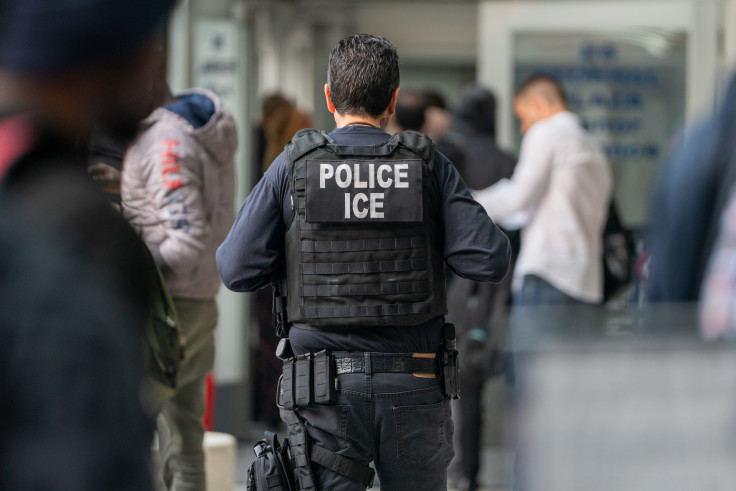
President-elect Donald Trump's proposed mass deportations are bound to find many obstacles once his administration begins. On the one hand there's the sheer cost of the operations as studies have shown that the cost of arresting just one million undocumented immigrants in a single year could clock in at $7 billion.
There are also legal hurdles linked to his expected use of the military to carry out deportations and potential challenges around other countries accepting deportees, just to name a couple.
But, as a sprawling new NBC News report reveals, one of the biggest hurdles surrounding deportations might just have to do with the amount of time and resources required by Immigration and Customs Enforcement (ICE) to pull off what the agency calls "targeted enforcement."
The news outlet was given access to one of those operations in suburban Boston and reported that "agents spent hours waiting for their targets to leave their homes and head to work, revealing the time and labor-intensive effort it takes for federal agents to apprehend individuals who could be eligible for deportation."
The operation, conducted by over a dozen ICE agents, involved extensive surveillance, with agents spending 40 to 80 hours monitoring the individuals before making arrests. These individuals were previously arrested by local jurisdictions for felony or serious crimes but had been released on bail instead of being handed over to federal authorities.
"ICE doesn't do blanket sweeps," said ICE's acting assistant director for enforcement and removal operations Todd Lyons to NBC News. "We don't do large-scale roundups. Every individual that's here today has come to our attention because they've been arrested by a local municipality for a felony or an egregious crime."
However, as ICE remains focused on individuals with criminal records, the prospect of mass deportations looms large, with logistical challenges already complicating enforcement efforts. Then there's the topic of ICE detention centers which, judging by Trump's first term, could complicate ICE resources even more, as former ICE attorney Veronica Cardenas told The Latin Times:
"Currently, the budget for ICE detention is approximately $1.3 billion, supporting an average daily population of around 30,000 to 50,000 detainees. This cost is in addition to the significant expenses associated with immigration court proceedings. Under the Obama administration, the majority of detained non-citizens were individuals with criminal convictions, which lead to higher deportation rates for criminal non-citizens. However, during Trump's first presidency, we saw a shift: the majority of detainees were recent entrants without crimes, including asylum seekers apprehended at the border"
To circumvent this issue, Trump is likely to focus on swift deportations of recent arrivals, getting "more bang for buck" as Cardenas puts it. "Trump is also likely to prioritize states where law enforcement agencies cooperate with ICE," she added and as "for non-cooperative states, I foresee an increase in transferring detainees to states like Texas and Louisiana, where higher deportation rates are recorded after court hearings."
As the new administration prepares to take office, it remains unclear how federal policies will evolve, and how ICE will navigate the challenges of enforcement, local cooperation, and public safety as the tension between federal priorities and local resistance will likely shape the future of immigration enforcement in the coming months.
© 2025 Latin Times. All rights reserved. Do not reproduce without permission.






